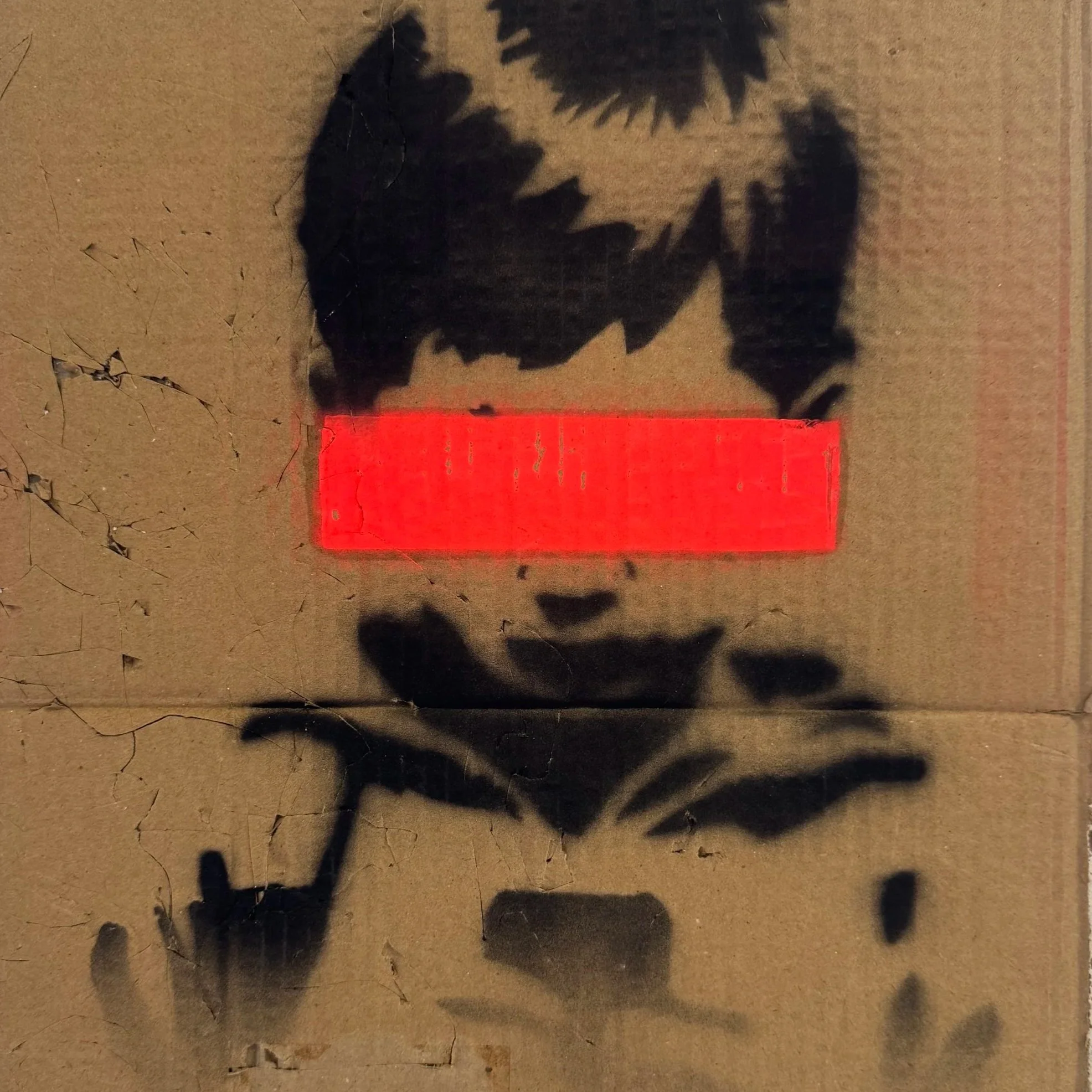Childhood Not Found II
Dawson Place, Notting Hill, London
Spray paint on wall (stencil)
Executed 7th June 2024
On the early hours of 7th June 2024, I returned to one of my most defining images, Childhood Not Found, and brought it into a completely new setting: the quiet residential streets of Dawson Place, Notting Hill. Unlike my first stencil in Leake Street Arches, which existed within the dense ecosystem of graffiti culture, this intervention was my first conscious decision to place my work in an environment unprepared for it, outside the noise and permission of a graffiti zone, directly into the fabric of everyday life.
The stencil remained faithful to the original language: a child rendered in bold black silhouette, eyes covered by a searing red bar, hands clasping a glowing red device. But in this new context, everything shifted. Against the pale, polished walls of Notting Hill, the figure felt almost spectral, an apparition interrupting the calm of an elegant neighbourhood. I remember wondering how the child’s presence, so ordinary in subject yet so unsettling in form, might challenge those who walked by each morning, residents, parents, children on their way to school, to question what they were really seeing.
In Leake Street, Childhood Not Found was part of a conversation, one image among many in a layered, rebellious environment. In Dawson Place, silence replaced dialogue. The absence of competing graffiti transformed the work into a quiet rupture. It no longer needed to shout; it simply existed, stark and undeniable, and that stillness made it more powerful.
The symbolism remained unchanged, though perhaps it resonated differently here. The faceless child, blinded by technology, stands as a mirror to our collective condition, eyes obscured by the same red that illuminates the device. This repetition of colour, connecting the bar and the screen, is a thread that runs through my work since 2019. Back then, it represented vitality absorbed by technology, the only living tone in otherwise muted figures. Over time, the children gained presence, structure, and gravity, while the red persisted as a warning: a light that both captivates and blinds.
Placing the work in a residential street was a deliberate act of tension. I wanted to create contrast, between the innocence of the image and the refinement of its surroundings, between the directness of the message and the quiet restraint of the place. Graffiti rarely appears in neighbourhoods like this, and that rarity makes the encounter sharper. People do not expect to be confronted with questions about technology and childhood as they leave their homes, and that very surprise opens space for reflection.
Childhood Not Found II became a turning point for me, my first step beyond sanctioned graffiti areas into spaces of everyday life. It tested how my imagery would resonate with an unfiltered audience, and it reaffirmed my conviction that art should exist where it is least expected. The work is to this day still visible, the wall became a site of dialogue: between comfort and awareness, privilege and presence, silence and alarm.
Looking back, this intervention represents more than a repetition; it’s an evolution. It embodies my belief that art should not remain confined to its designated spaces but should emerge within the environments it seeks to question. Through this piece, I wanted to remind both myself and those who encountered it that awareness begins with interruption, and sometimes, it takes a single figure on a neglected wall to make us look up again.



